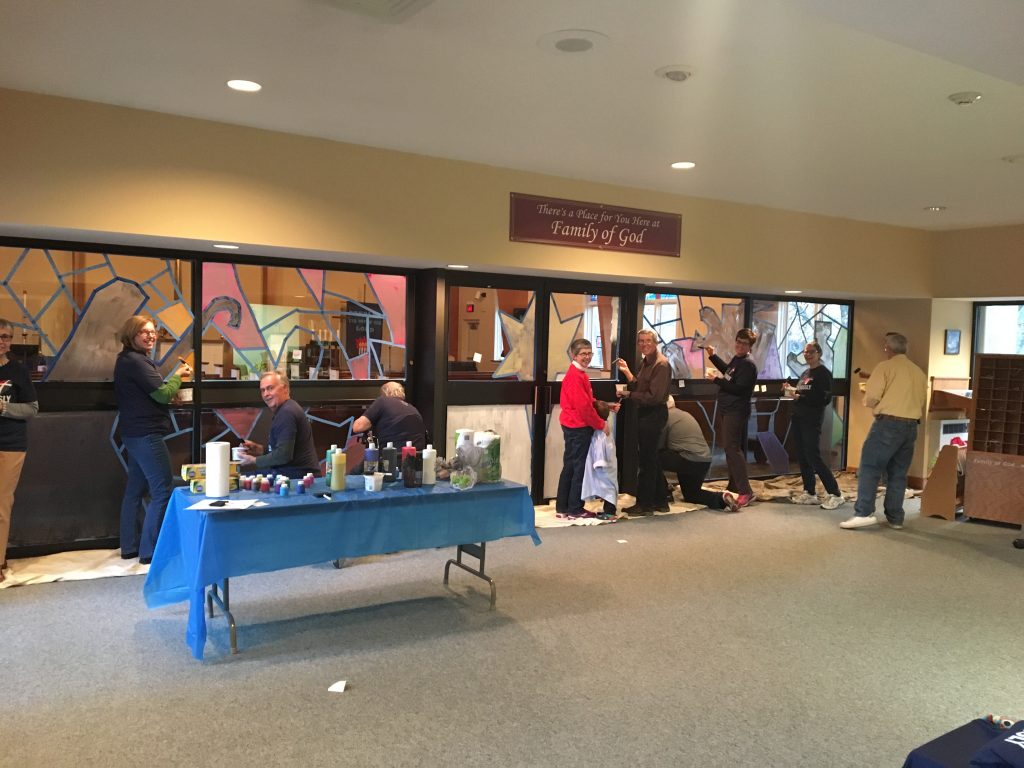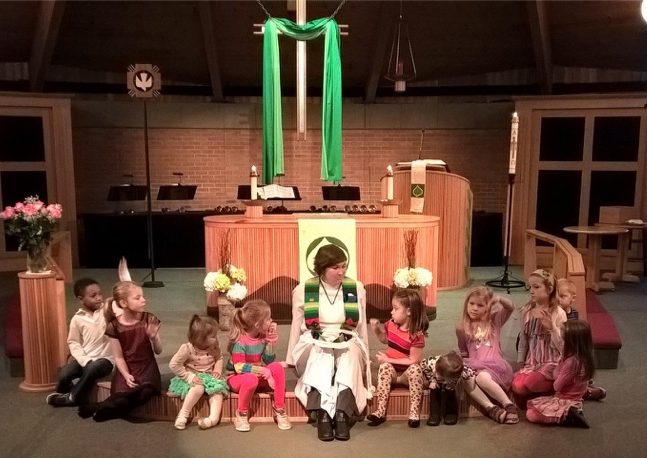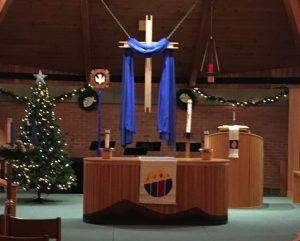Today’s post is from the artist Robyn Sand Anderson.
In 2015, I created a series of paintings interpreting Arvo Pårt’s “Magnificat & Sieben Antiphonen”. I had interpreted music with paint a few years prior and found it to be particularly fulfilling. I seem to see certain colors with certain notes, chords or voices. I made the decision to try another grouping and consulted Dr. Brian Schmidt, a friend from our previous congregation in New Ulm, MN. I had worked with him on Buxtehude’s Member Jesu Nostri when he was choral conductor at Duke University Chapel. He suggested Arvo Pårt’s Magnificat grouping, which his South Dakota Chorale had performed. I listened to the CD and was moved to interpret it.

This painting is the first of eight and is named “Magnificat”. I listened to the music multiple times, letting it wash over me, waiting for visuals that come from it. I usually see a certain color or two, sometimes an image or symbol, texture or movement. Sometimes I will sketch, sometimes I just start with a color and see where it takes me. One decision leads to another. It involves a lot of “listening” and waiting, but also a step forward and sometimes back. Like Advent. We wait. We listen. We boldly take a step forward. Sometimes it works, and sometimes we need to step back and wait. Discern. Listen. And then we see glimpses of beauty, of light in the darkness.
I am in a book club right now and we are reading “Neither Wolf Nor Dog: On Forgotten Roads with an Indian Elder” by Kent Nerburn which speaks to this opening up to our Creator.
Listening and waiting. Two things that are very hard for us to do, yet there is great Beauty waiting for us there.

 I’m coming to the end of my first year as pastor in my congregation, and Christmas is the last “first” of the list. This also happens to be the year when Advent 4 is Christmas Eve. Since the day is so full, I decided to concentrate on Christmas Eve and to adapt an “Advent Lessons and Carols” service from Sundays and Seasons for the morning service. The result is a relaxed service that recognizes Advent 4. Since I know that many of my members will likely come to both the morning service and also one of the two Christmas Eve services we offer (at 4 and 8p.m.), this is a way we can give attention to both celebrations.
I’m coming to the end of my first year as pastor in my congregation, and Christmas is the last “first” of the list. This also happens to be the year when Advent 4 is Christmas Eve. Since the day is so full, I decided to concentrate on Christmas Eve and to adapt an “Advent Lessons and Carols” service from Sundays and Seasons for the morning service. The result is a relaxed service that recognizes Advent 4. Since I know that many of my members will likely come to both the morning service and also one of the two Christmas Eve services we offer (at 4 and 8p.m.), this is a way we can give attention to both celebrations.

 We will be using liturgy from Sundays and Seasons for quite a few parts of this service. We love the “Call to Worship from Psalm 98” and will be using it as our statement of faith: “Justice for everyone, everything fair! Sing to God something brand new! For God has done wonderful things!” For the blessing of Christmas ornaments, we will invite congregation members to bring an ornament from home (and we will have some on hand to give out as well). This blessing will be a slightly altered “Blessing of the Christmas Tree,”* adding to the last line “May we who stand in its light eagerly welcome the true Light that never fades, and as we carry these ornaments home may we remember that your light goes with us wherever we go. All glory be yours now and forever. Amen.” We envision that everyone will hold their ornament as they sit in the pew and saying this blessing together. If there are many children at this service, I might invite them up during this time to help lead the blessing from the front. We intend to incorporate the Blessing of the Gifts Rite during the Benediction as a sending.
We will be using liturgy from Sundays and Seasons for quite a few parts of this service. We love the “Call to Worship from Psalm 98” and will be using it as our statement of faith: “Justice for everyone, everything fair! Sing to God something brand new! For God has done wonderful things!” For the blessing of Christmas ornaments, we will invite congregation members to bring an ornament from home (and we will have some on hand to give out as well). This blessing will be a slightly altered “Blessing of the Christmas Tree,”* adding to the last line “May we who stand in its light eagerly welcome the true Light that never fades, and as we carry these ornaments home may we remember that your light goes with us wherever we go. All glory be yours now and forever. Amen.” We envision that everyone will hold their ornament as they sit in the pew and saying this blessing together. If there are many children at this service, I might invite them up during this time to help lead the blessing from the front. We intend to incorporate the Blessing of the Gifts Rite during the Benediction as a sending.
 “In the name of the Father, and of the
“In the name of the Father, and of the